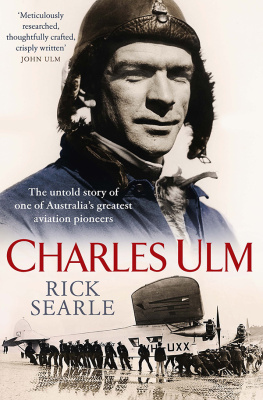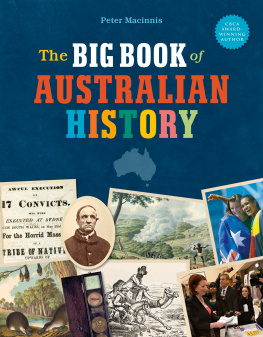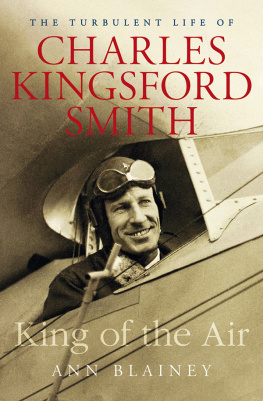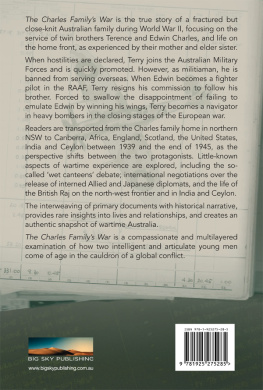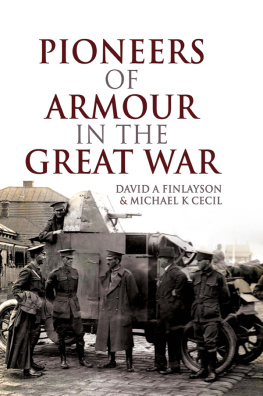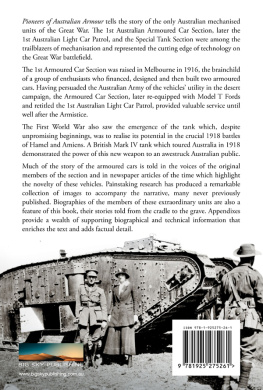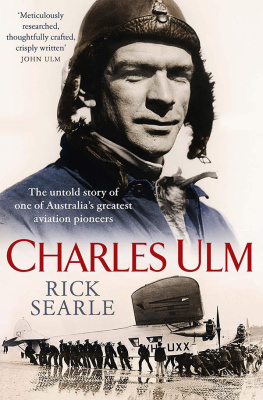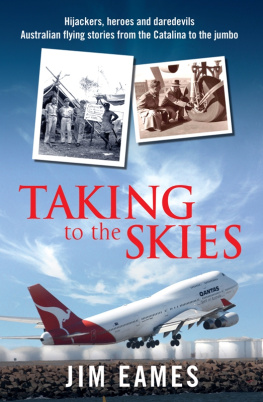Rick Searle has been a full-time freelance writer and film maker for over 40 years. He has worked in radio, television and film, and lectured in television writing at the Queensland University of Technology. Rick has had a lifelong interest in aviation. He is the author of five books, including The Man Who Saved Smithy, about the life of Australian flyer and navigator Sir Gordon Taylor.

Charles Ulm overseeing the refuelling and mechanical checks of the Southern Cross, Italy, 1929. National Library of Australia

First published in 2018
Copyright Rick Searle 2018
All rights reserved. No part of this book may be reproduced or transmitted in any form or by any means, electronic or mechanical, including photocopying, recording or by any information storage and retrieval system, without prior permission in writing from the publisher. The Australian Copyright Act 1968 (the Act) allows a maximum of one chapter or 10 per cent of this book, whichever is the greater, to be photocopied by any educational institution for its educational purposes provided that the educational institution (or body that administers it) has given a remuneration notice to the Copyright Agency (Australia) under the Act.
Allen & Unwin
83 Alexander Street
Crows Nest NSW 2065
Australia
Phone: (61 2) 8425 0100
Email:
Web: www.allenandunwin.com

ISBN 978 1 76029 427 4
eISBN 978 1 76063 663 0
Maps by Map Graphics, Brisbane, unless otherwise attributed
Index by Puddingburn
Set by Bookhouse, Sydney
Cover design: Deborah Parry Graphics
Front cover photo: Charles Ulm, 1928, State Library of Queensland (SLQ)
In memory of Don Gough
19482017
CONTENTS
When my fathers name is mentioned, it is usually in the context of his 1928 trans-Pacific flight in the Southern Cross. But Charles Ulm accomplished a great deal more than that, and for both family and historical reasons I am delighted that there is at last a book that examines his extraordinary life in detail.
Meticulously researched, thoughtfully crafted, crisply written, Rick Searles Charles Ulm: The untold story of one of Australias greatest aviation pioneers should rest easily in the pantheon of our Greata poignant record of Australian endeavour.
As a very little boy (Im told) my father took me up in his flimsy biplanespeed maybe 100 kilometres per hour. At that time it took some Intrepids a month and more to fly EnglandAustralia. Ten years later in his specially built very long-range trimotor Faith in Australia he shrank the space to just under one week.
Our world quartered.
Flying to England after the Second World War, I enjoyed some five days of comfort. Jets reduced this to a day or so. Now were doing it non-stop. We jump on and off planes like buses.
Charles Ulm foresaw all this, and it was his mission to create an airline network that would shrink our island continent and span our oceans, linking Australians with each other, and the world. But boy, were there headwinds!
John Ulm
May 2018
One morning towards the end of 1934, the postman delivered a large envelope to the offices of C.T.P. Ulm, Aircraft Operator, at 16 Barrack Street, in the heart of Sydneys business district. Ellen Rogers was expecting it. It was the manuscript of her bosss latest flight, and it was her job to type it up, ready for the printers.
After almost six years as Charles Ulms secretary, Miss Rogers could read his handwriting easily, but this manuscript was untidy. Almost every page had words overwritten or crossed out, with second thoughts squeezed between lines and in the margins. Ellens brow furrowedthis was going to be a challenging job. Inserting a sheet of paper, a carbon and a flimsy into her machine with practised ease, she began to type.
Chapter OneThank you!!!
Thank you; that is my first feeling as I set off to write this book which will be an attempt to record the Stella Australis all-British transpacific flight of 1934 and answer some of the seemingly endless, but often logical questions that are often asked about such flights.
Yesthank youthose hundreds of people who made the flight a successfrom the designers, mathematicians, engineers, to the junior engineering apprentices who brought into being the aircraft, the engines, instruments, the wireless and other equipment used; to the firms and individuals who to a small or great extent supported the undertaking; to the meteorologists, to the wireless operators of ship and shore stations; to my colleagues George McCorquord Littlejohn and John Joseph Leonard Skilling who saw the job through to conclusion with me.
After this triumphant, if somewhat overblown opening, Ulms writing descended to a more prosaic level, and Rog, as he affectionately called her, found herself transcribing pages dealing with the reasons for making a second trans-Pacific flight, the problems faced, the choice of aircraft, the navigation, and the selection of the crew. It was all straightforward stuff, expressed in Ulms direct and positive style. But when she came to the section about the route that the Stella Australis had traversed, from San Francisco to Honolulu to Fanning Atoll, thence to Canton Island, Suva, Auckland, Sydney and on to Melbourne, there was a problem. Ulm had sketched out rough, hand-drawn tables containing the distances between the various ports along the route, but had left the adjacent column, intended for the times taken to fly each sector, blank.
Ellens fingers stopped their dance across the keyboard. She couldnt enter the figures because they were not yet known. The trans-Pacific flight had yet to take place; Stella Australis was still sitting firmly on the ground at San Francisco. The manuscript that she was so faithfully transcribing was pure conjecture.
She allowed herself a wry smile; this kind of thing was typical of Charles Ulm. A consummate publicist, he knew that timing was everything, and had written a rough draft in advance, so as to have the book in the shops as soon as the trans-Pacific flight was a fait accompli.

Ellen Rogers never filled in the blanks: before she had finished transcribing the manuscript, word came through that Ulm and his companions had come down in the Pacific, somewhere between San Francisco and Honolulu. Despite an exhaustive search, no trace of Stella Australis or her crew was ever found.
Had Charles Ulm lived, there is little doubt that the story of civil aviation in Australia would have taken a different course, and he would have been a major player.
His unpublished manuscript, and Ellen Rogers incomplete transcription, are now in the Charles Ulm Collection in the National Library of Australia; poignant metaphors for a life in aviation that, tragically, was unfulfilled.
Charles Thomas Phillippe Ulm was born on 18 October 1898 at his familys home at 5 Mills Street, Albert Park, Melbourne, not far from where the Formula One motor racing circuit now stands. The baroque spelling of his third Christian name was perhaps a nod to his ancestors; his father, Emile Gustavus Ulm, a Parisian artist, had emigrated during the previous decade.

